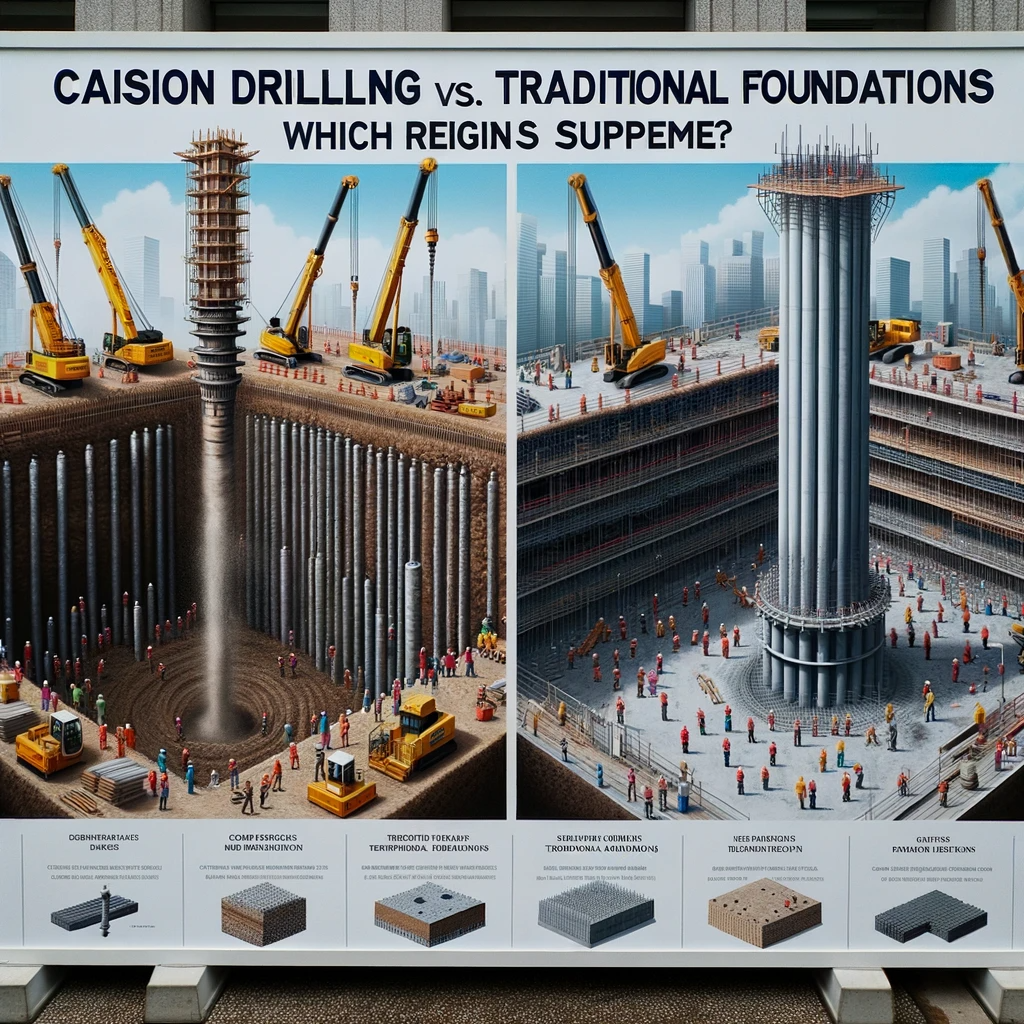Caisson Drilling vs. Traditional Foundations
In the competitive world of construction, caisson drilling is emerging as a frontrunner. But how does it stack up against traditional foundation methods? Explore the benefits, drawbacks, and the scenarios where caisson drilling truly shines.

Understanding the Basics
Before diving into the comparison, it’s essential to understand the basics of both methods:
- Caisson Drilling: This method involves drilling deep into the ground to reach a stable layer, often bedrock. Once achieved, the hole is filled with concrete, creating a robust foundation.
- Traditional Foundations: These are often shallow foundations like spread footings, which distribute the building’s weight over a broad area, or deep foundations like driven piles, which transfer the load to deeper, more stable soil layers.
Benefits of Caisson Drilling
- Depth and Stability: Caisson drilling can reach deeper layers, ensuring a more stable foundation, especially in areas with loose surface soil.
- Versatility: It’s adaptable to various soil types and conditions, making it suitable for diverse construction sites.
- Cost-Effectiveness: In areas with challenging soil conditions, caisson drilling can prove to be more economical in the long run due to reduced maintenance costs.
Strengths of Traditional Foundations
- Simplicity: Traditional methods, especially shallow foundations, are often simpler and quicker to implement.
- Proven Track Record: These methods have been in use for centuries and have a well-established track record.
- Material Efficiency: Traditional foundations can sometimes use fewer materials than caisson drilling, leading to potential cost savings.
Where Caisson Drilling Shines
Caisson drilling is especially beneficial in:
- Urban Areas: In cities with existing structures, caisson drilling can provide stability without disturbing neighboring buildings.
- Waterfront Properties: For structures near water bodies, caisson drilling ensures the foundation remains unaffected by water movement or erosion.
- Seismic Zones: In areas prone to earthquakes, the deep foundation provided by caisson drilling offers added security.
When to Opt for Traditional Foundations
Traditional methods are preferable in:
- Stable Soil Conditions: In areas with firm and stable soil, shallow foundations might suffice.
- Smaller Structures: For lighter buildings or structures, the depth and robustness of caisson drilling might be overkill.
- Tight Budgets: Initial costs for traditional methods can sometimes be lower than caisson drilling, making them attractive for budget-conscious projects.
Innovations and The Future
The construction industry is continuously evolving. While caisson drilling has brought about significant innovations, traditional foundation methods are also seeing advancements in materials and techniques. The choice between the two will depend on the specific project requirements, budget, and site conditions.
Conclusion
Both caisson drilling and traditional foundations have their strengths and weaknesses. While caisson drilling offers unparalleled depth and stability, traditional methods provide simplicity and a proven track record. As with most things in construction, the “best” method depends on the project’s unique needs. However, as technology and techniques advance, the gap between the two might narrow, leading to even more efficient and robust foundation solutions in the future.